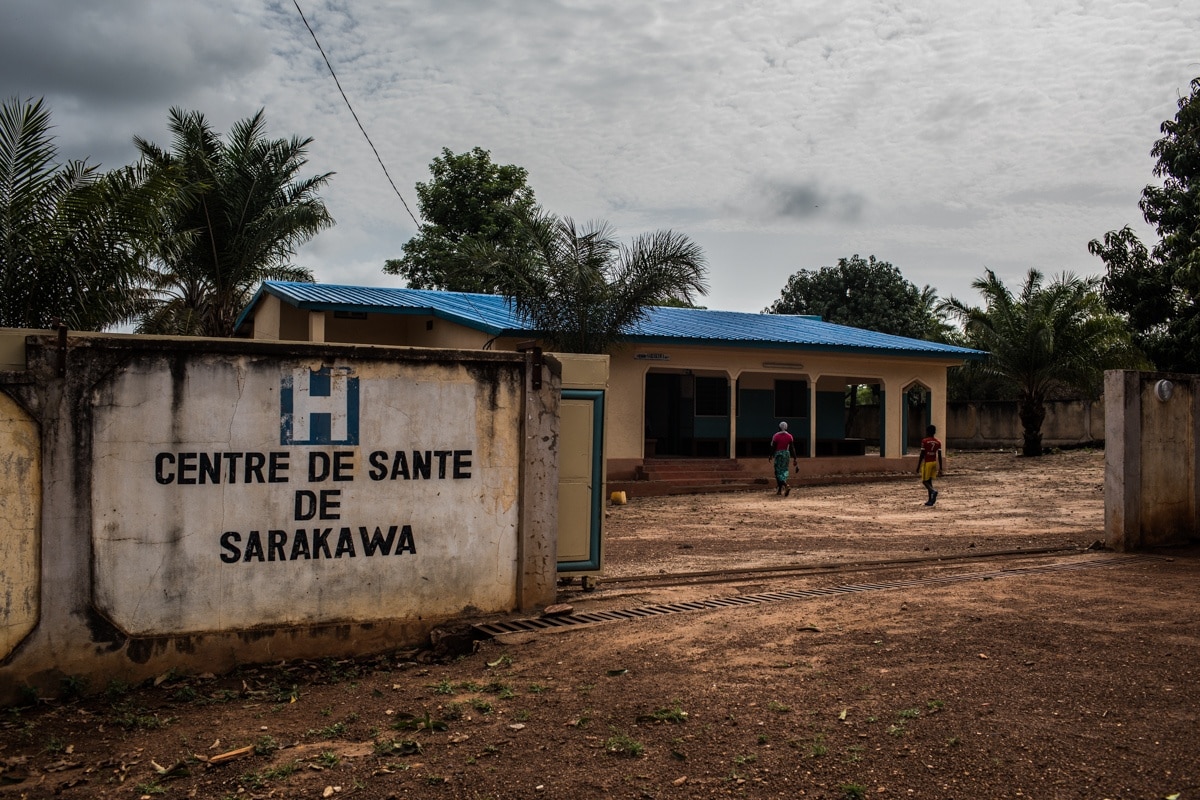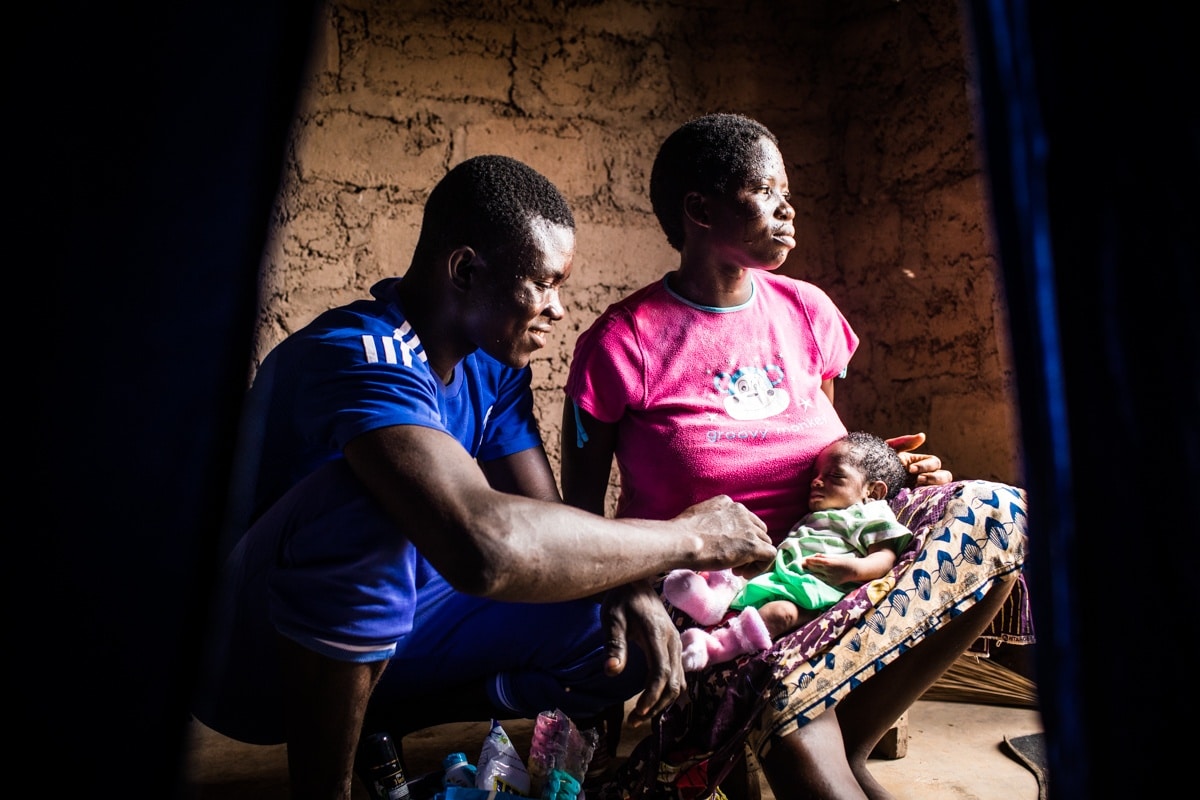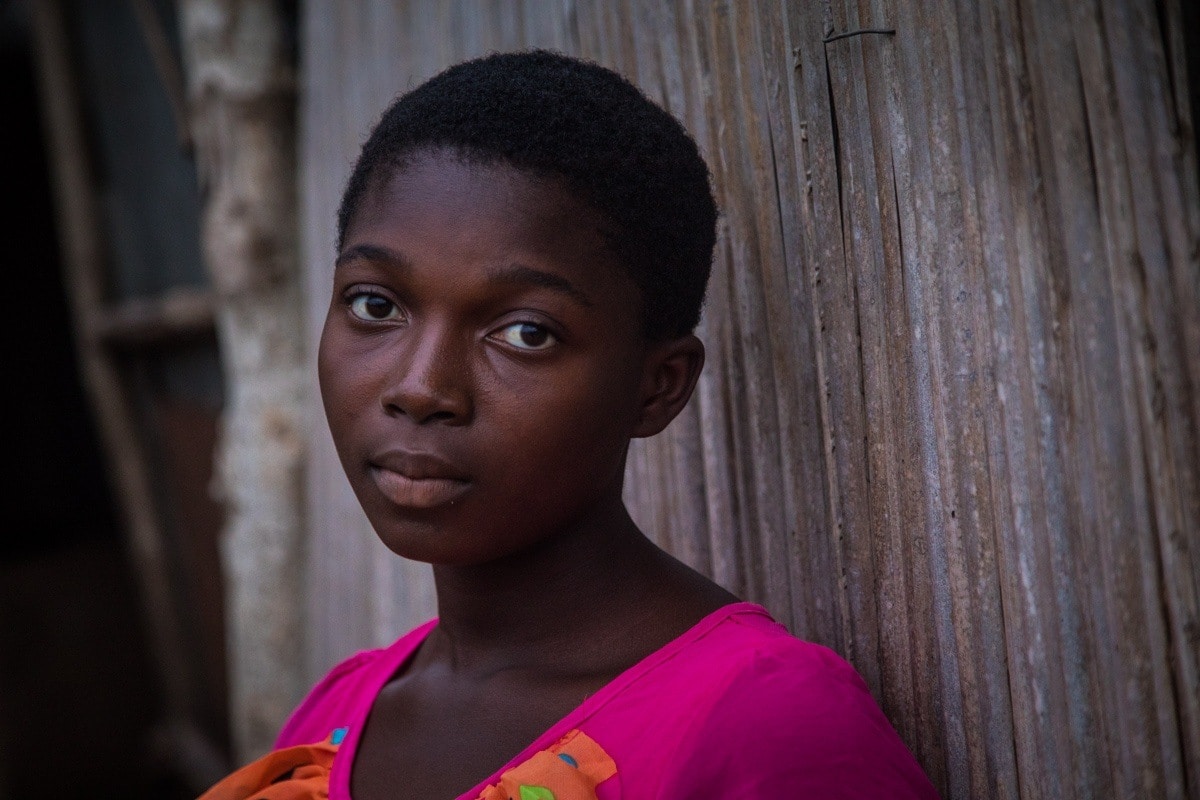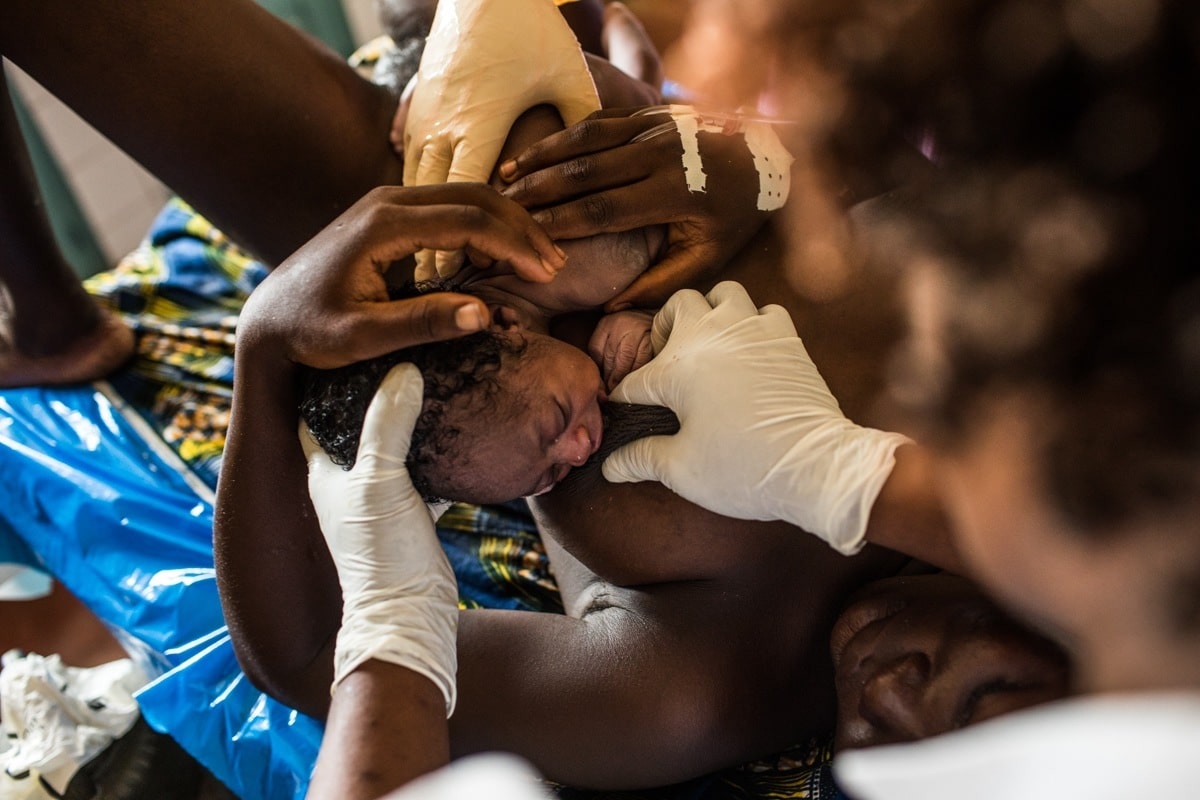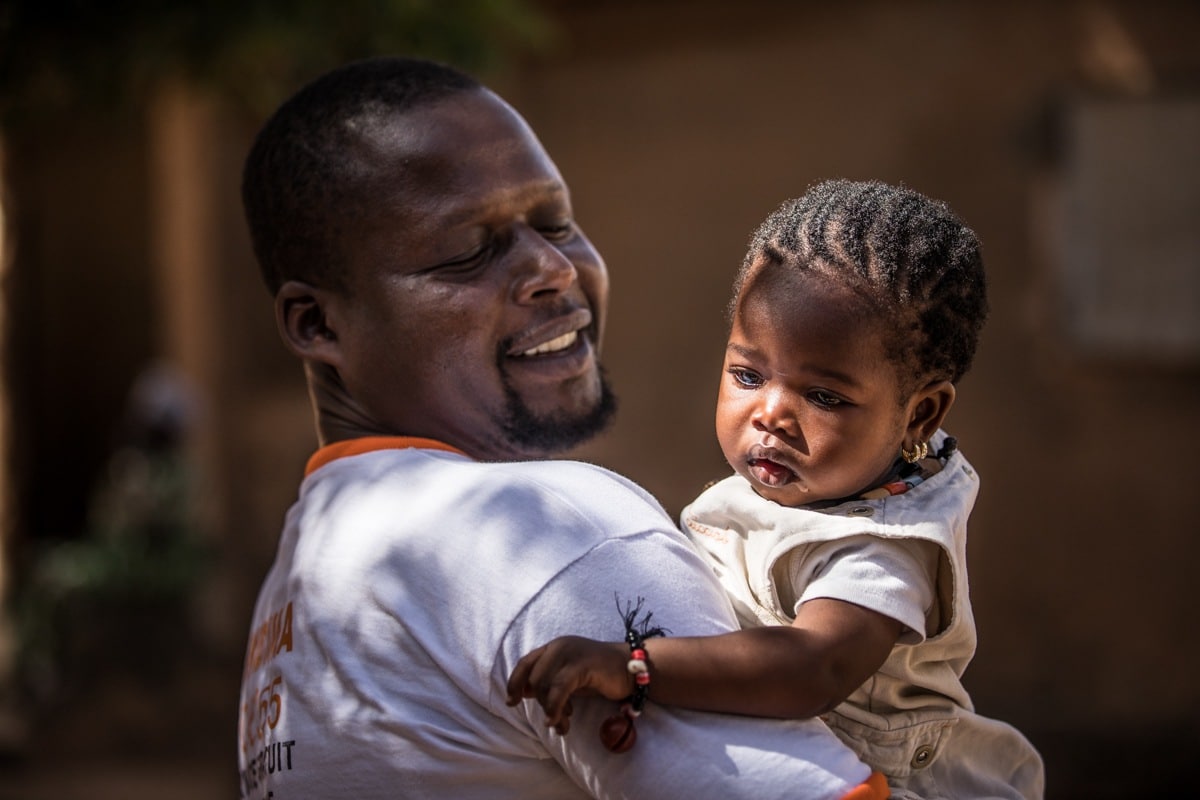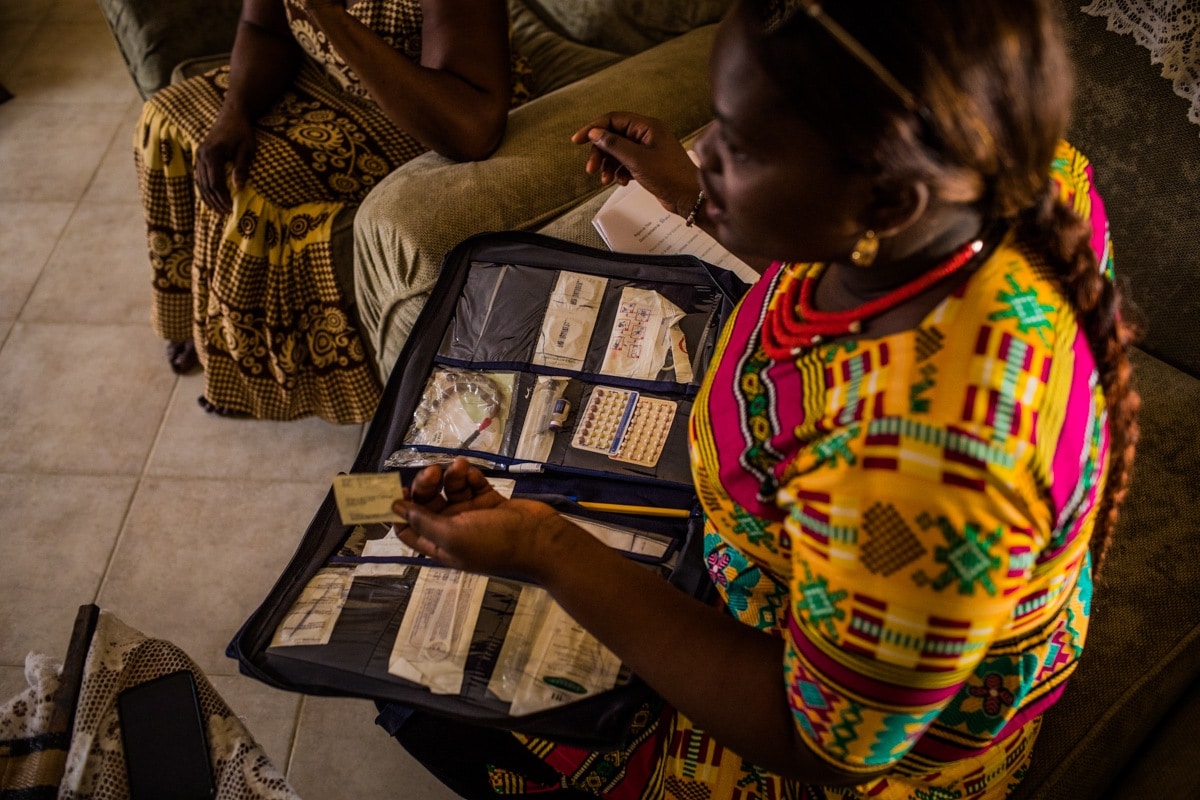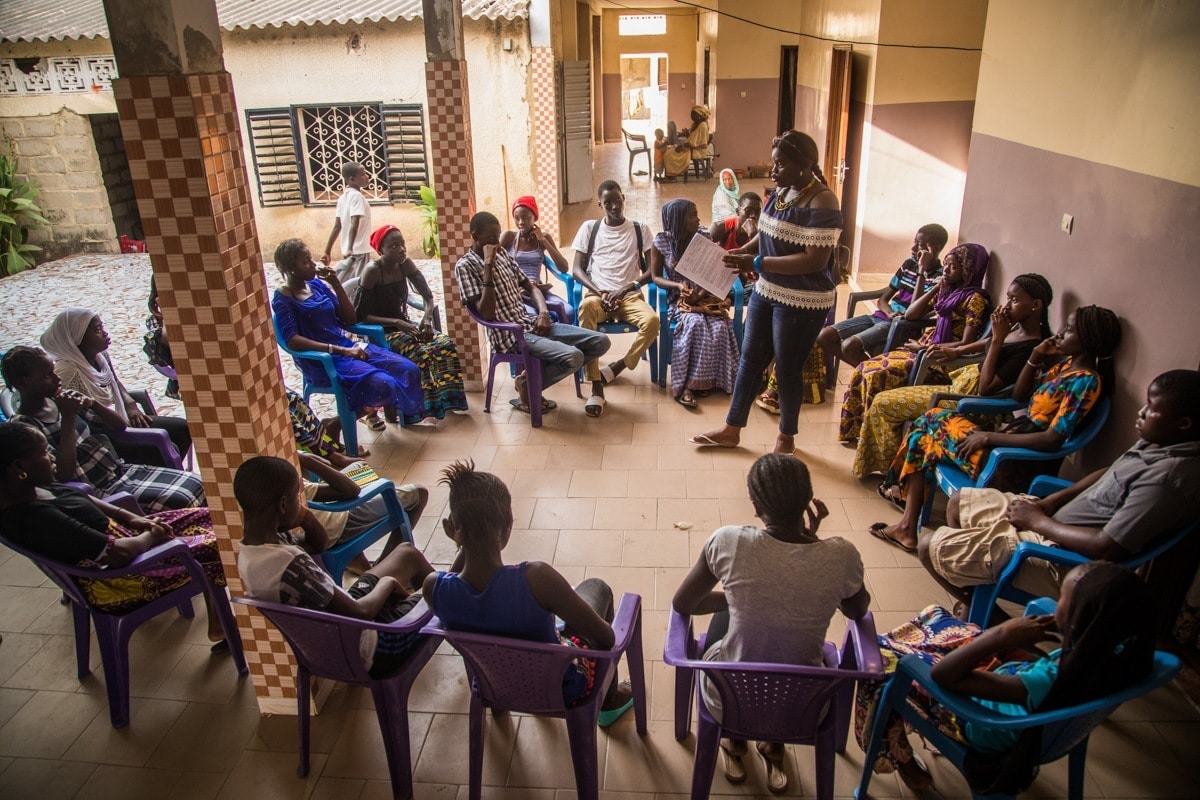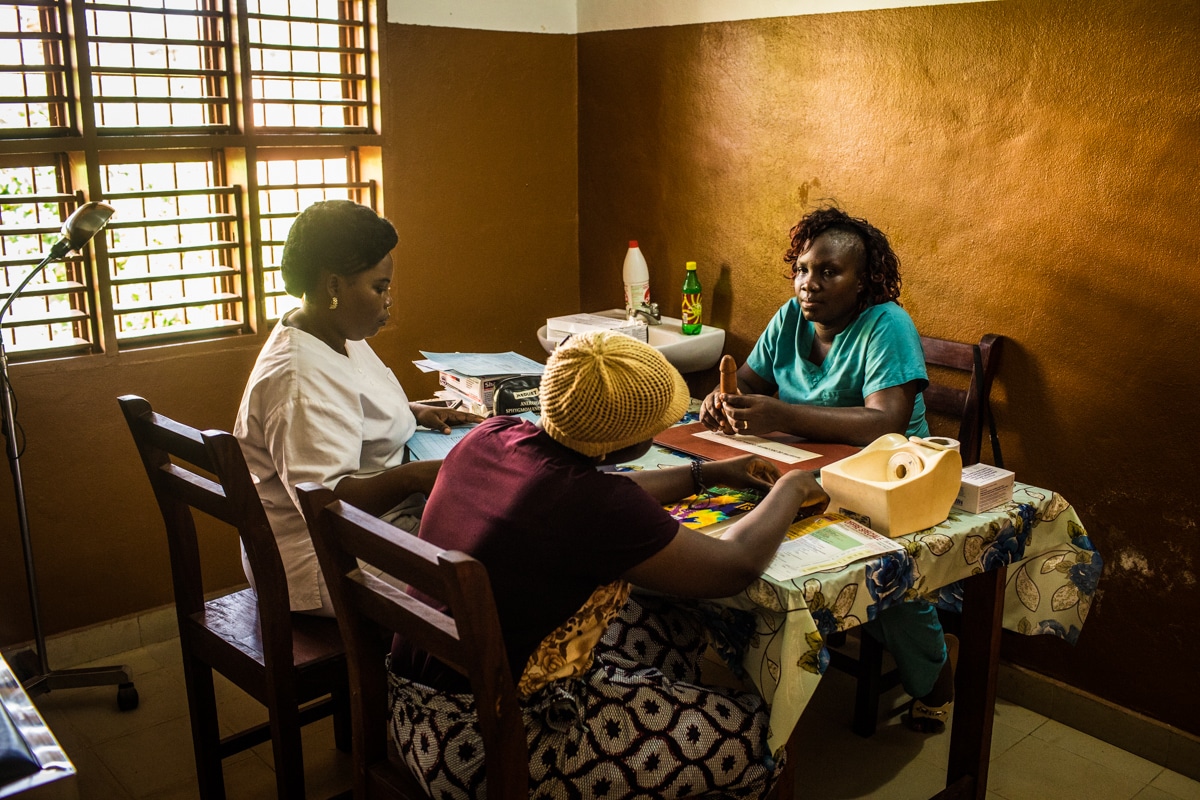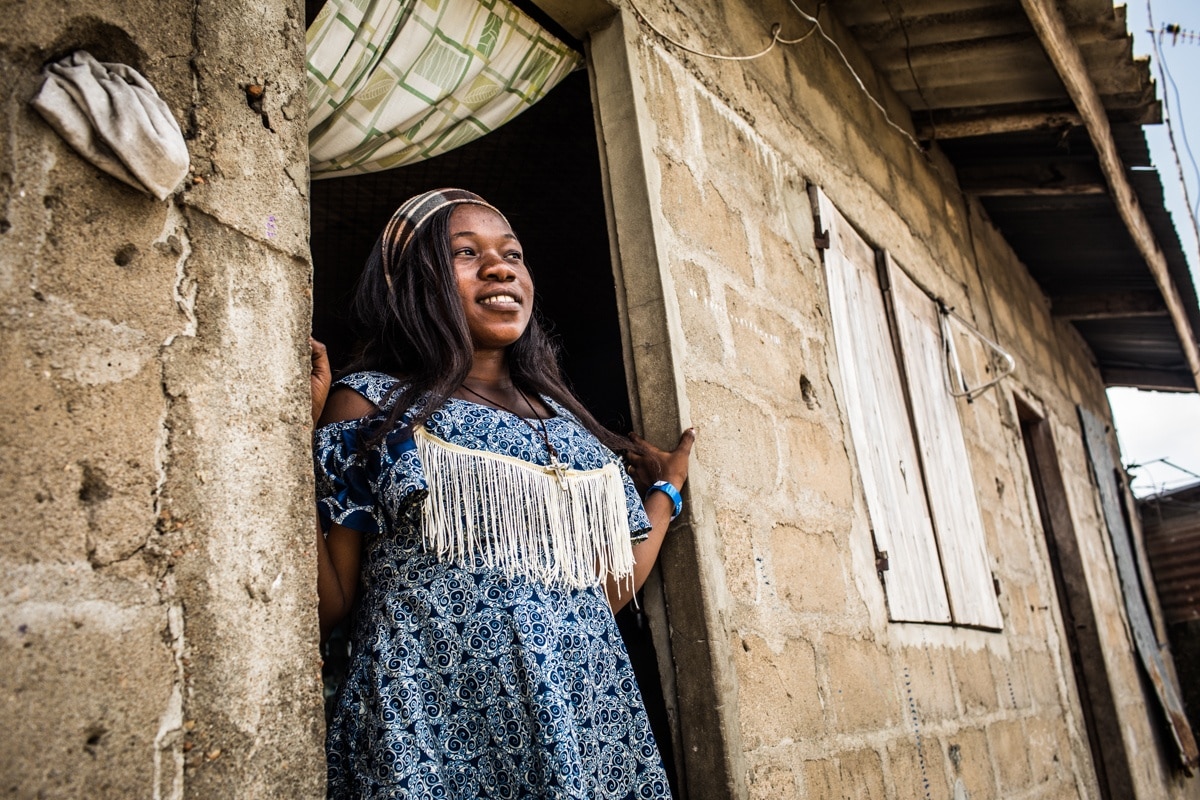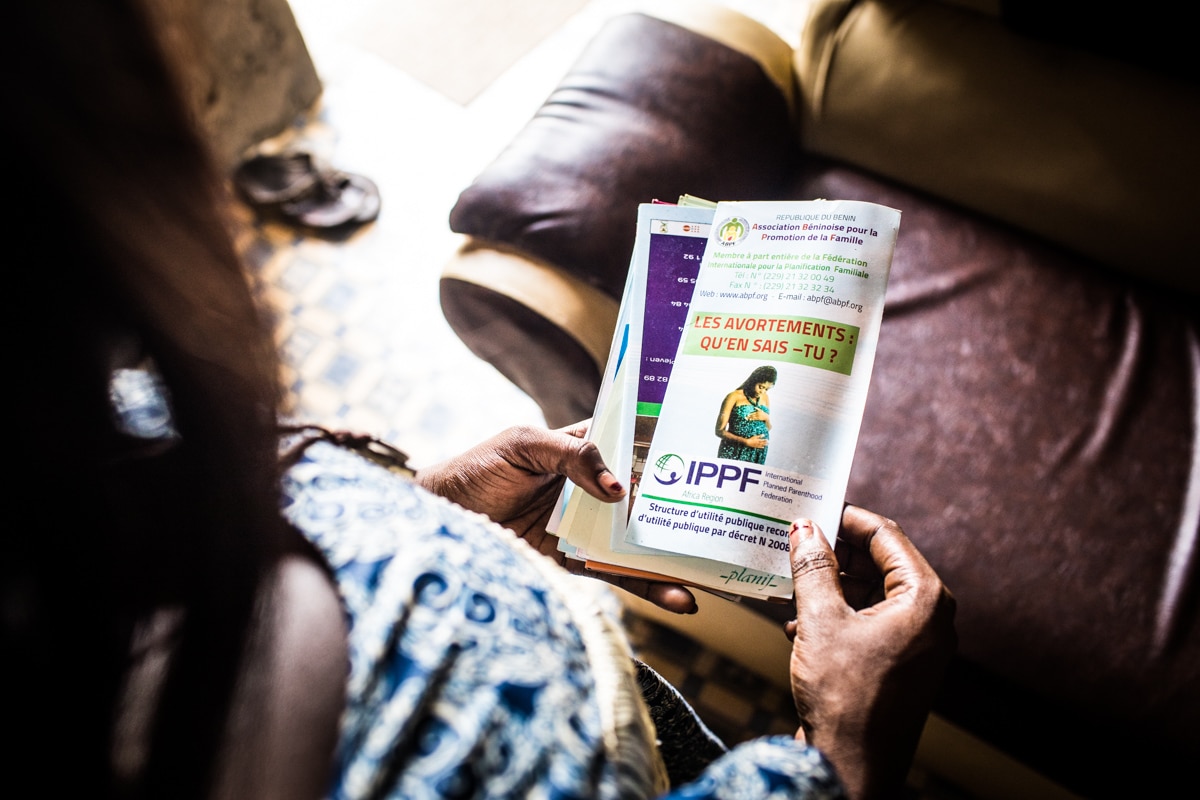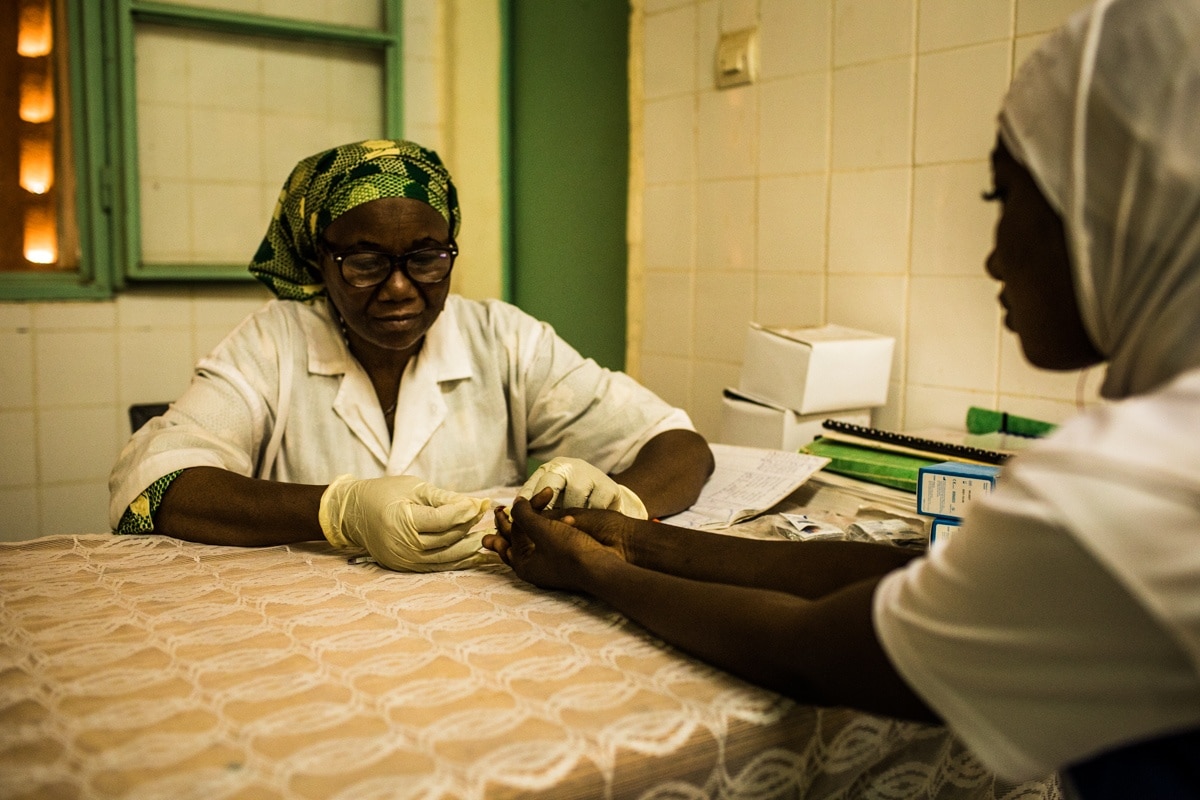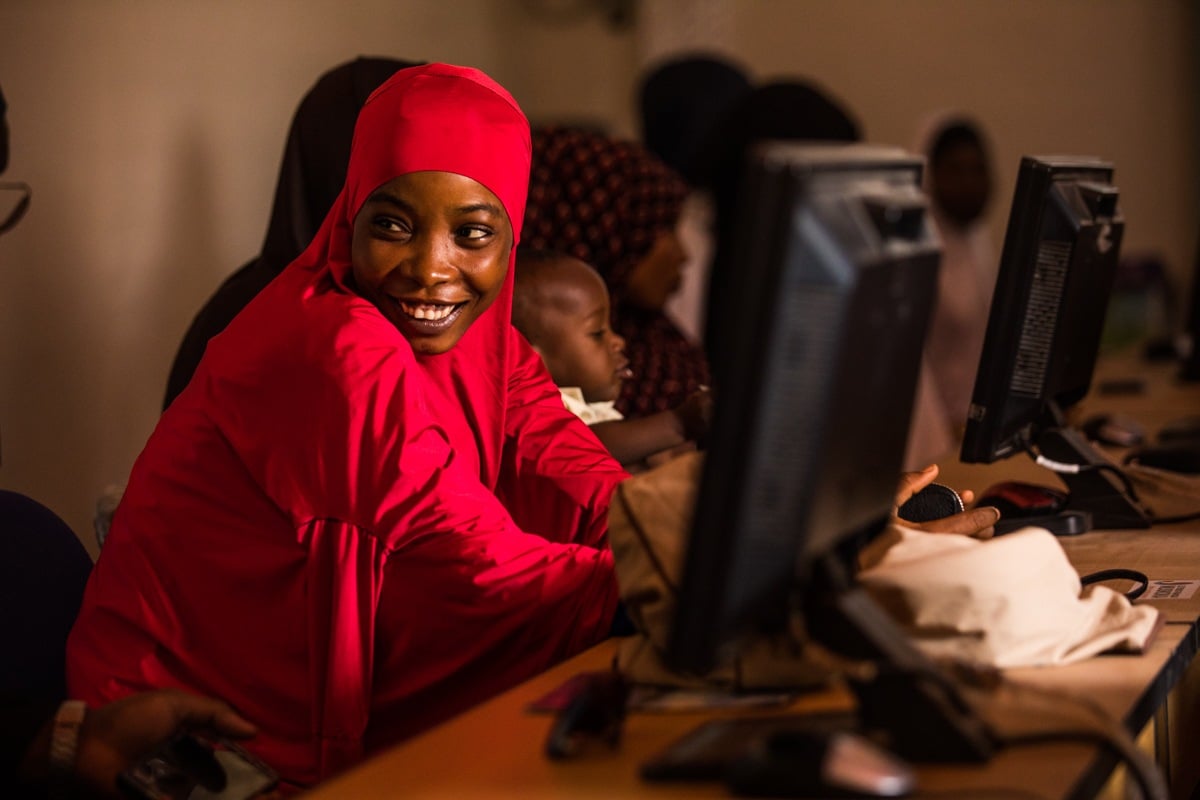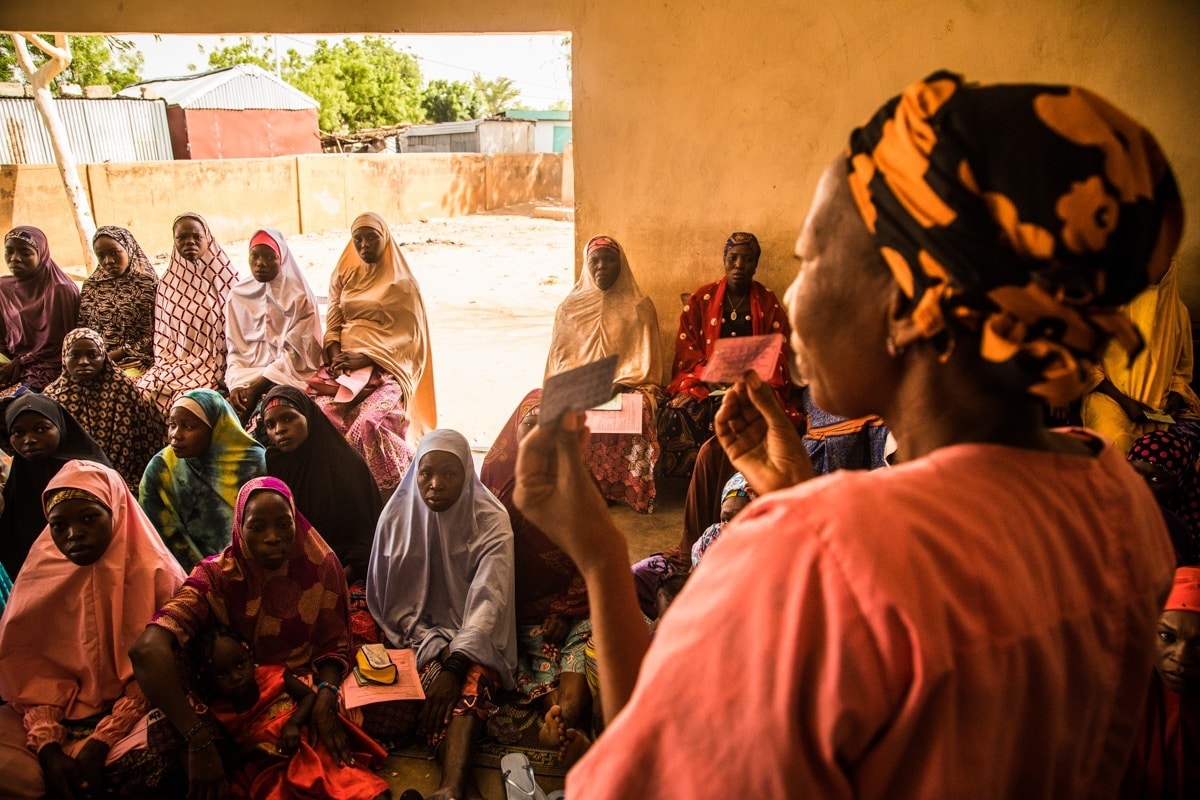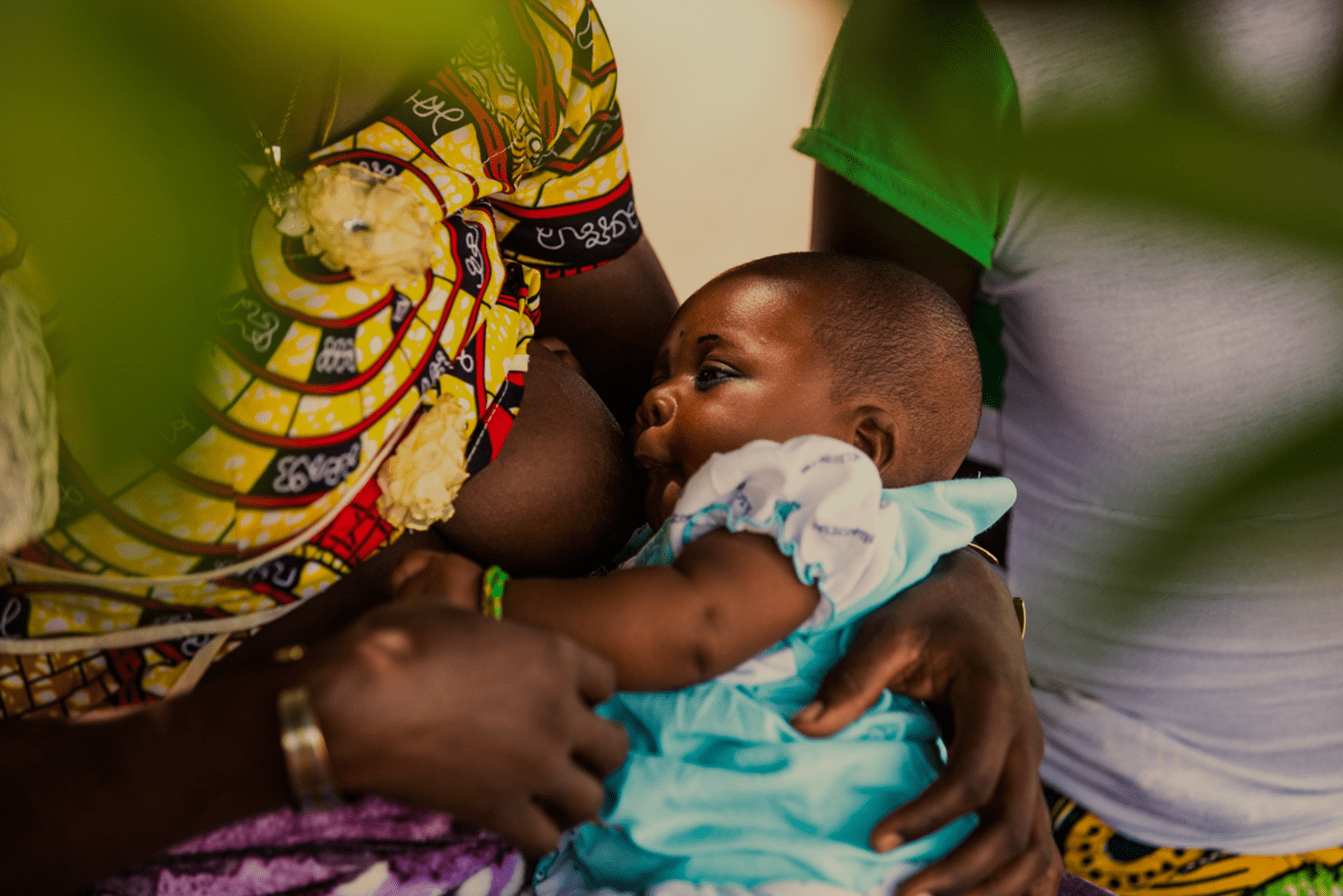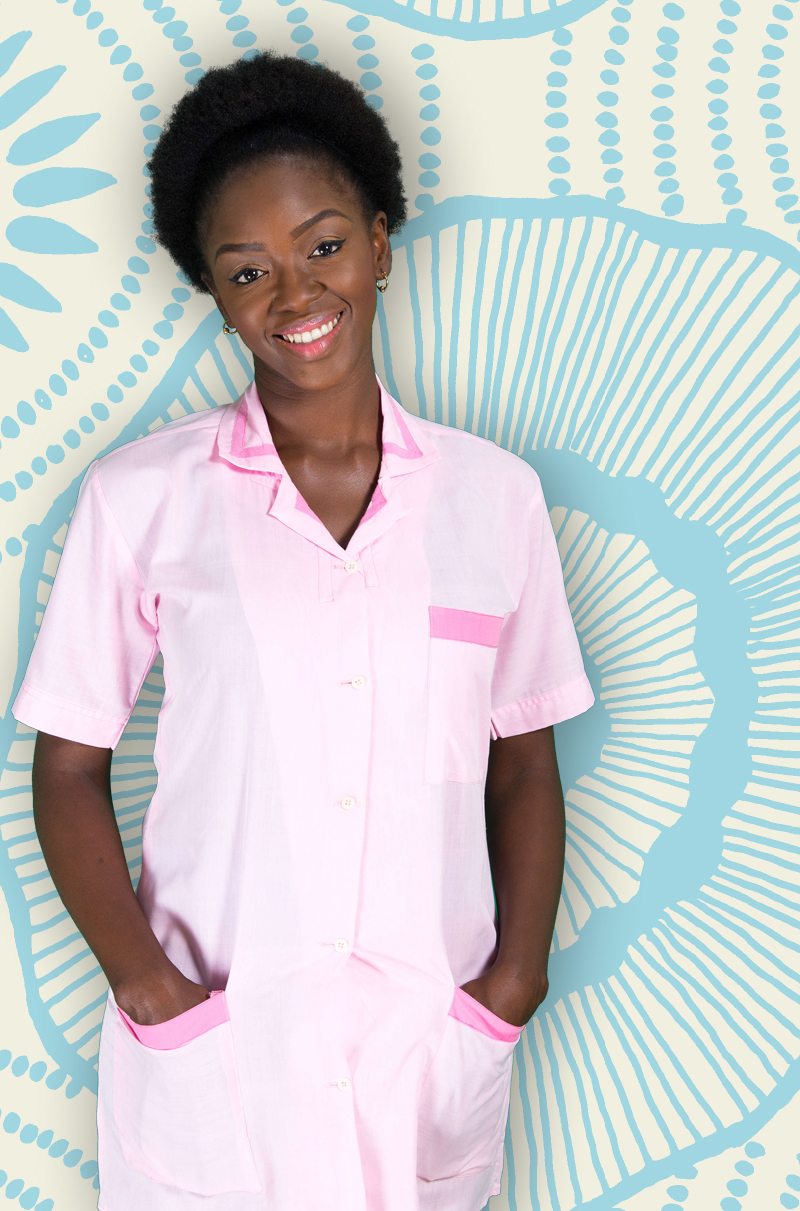
by Juliette | 28 July 2020
Togo has 7.8 million inhabitants, 41% of them aged under 15 and 60% of them living outside of towns.
Economic growth picked up in 2018 to 4.9% (2.3% per capita), mainly driven by the rebound in public investment, robust growth of the services sector, the recovery in industrial production and the performance of the transport and telecommunications sectors.
The national poverty rate declined by just over 6 percentage points from 61.7% in 2006 to 55.1% in 2015. However, poverty remains widespread, especially in rural areas where 69% of households were living below the poverty line in 2015.
togo IN FIGURES
- Total population 2020* : 8 M
- Very young population* :
- 32% aged between 10 and 24
- 41% aged under 15
- Population growth rate* :
- 2,6% per year in Togo
- 1,1% per year in global terms
-
Fertility rate of women aged 15-49 (2015-2020)* : 4,3 children per woman
-
Contraceptive prevalence rate of women aged 15 to 49 (2018)* :
- 23% all methods
- 20% modern methods
- Maternal mortality ratio (2015)** : 396 deaths per 100,000 live births
- Rate of early marriage* : 12% of adolescents aged 15 to 19 married
- Early pregnancies* : 35,8% of adolescents under the age of 19 pregnant or have given birth
- Unmet family planning needs* : 33% of women aged 15 to 49
*www.unfpa.org/data/world-population-dashboard
**www.apps.who.int/gho/data/node.home

TOGO
THE FRENCH MUSKOKA FUND IN togo
Read about some of our high-impact interventions:
Innovative coordination mechanism
In Togo, activities supported by the French Muskoka Fund have been strengthened by interventions supported by other partners.
These include the French Development Agency (AFD), which is involved in the process of improving emergency obstetric and newborn care; Plan Togo, which is working to prevent adolescent pregnancy and marriage; North Star Alliance and the WADB, which are supporting the introduction of school clinics; and EngenderHealth and Jhpiego, which are helping to develop family planning programs.
It is also important to mention the support given by the Global Fund to Fight AIDS, Tuberculosis and Malaria and by GAVI.
Community-based family planning
In Togo, family planning has benefited from a repositioning plan. Of all the strategic innovations, the community-based distribution of family planning products is the one that has helped the country demedicalize the prescribing of injectable contraceptive methods. The number of users has risen from 2,338 to more than 97,000 in four years.
Building on the success of community-based distribution, the Ministry of Health has started developing a national policy and new community-based interventions strategic plan, delegating the management of family planning methods to local health workers, including injectable contraceptives.
The fight against gender-based violence
Studies on the links between violence and maternal health have been carried out in Togo, resulting in the creation of a consolidated report used as an advocacy instrument. This advocacy led to provisions on gender-based violence being included in the penal code.
Four studies were conducted on violence in hospital settings and the results used to enhance training modules for health care staff and inspire national strategies to improve reception in health services. Thousands of health and social workers have received training in the fields of human rights, communication, ethics and patient rights.
The subjects of gender, equity and family planning have been incorporated into several Emergency Obstetric and Newborn Care services, leading to an increase in demand.
Improving infant and young child feeding
Muskoka funding has helped implement a minimum package of nutrition-specific interventions by following a life-cycle approach, including the management of severe acute malnutrition in Togo.
The exclusive breastfeeding rate of children under six months rose from 48.1% in 2008 to 64.3% in 2017.
reduction in newborn mortality between 1990 and 2018 in Togo
reduction in under-five mortality between 1990 and 2018 in Togo
increase in the rate of births attended by qualified staff between 2010 and 2017 in Togo
increase in exclusive breastfeeding rates in babies under 6 months Togo
school dropout rate due to pregnancy
increase in women’s use of modern contraception in 2017 in Togo
To contact us, complete the form below and we will get back to you as soon as possible.

by Juliette | 28 July 2020
Almost half of the country’s 16.3 million inhabitants are concentrated around Dakar and other urban areas.
As the second fastest growing economy in West Africa, Senegal has seen growth in excess of 6% since 2014 and is expected to retain this dynamic in the coming years. However, employment problems, particularly among young people (32% of the population is aged 10-24); the cost of living; the quality of public services; the provision and cost of electricity; and the provision of water are still the main concerns of the Senegalese people.
A further decrease in the poverty rate is expected (from 34% in 2017 to 31% in 2020 [international poverty line]), mainly thanks to the dynamic state of the agricultural sector.
senegal IN FIGURES
- Total population 2020* : 16.3 M
- Very young population* :
- 32% aged between 10 and 24
- 43% aged under 15
- Population growth rate* :
- 2,9% per year in Sénégal
- 1,1% per year in global terms
-
Fertility rate of women aged 15-49 (2015-2020)* : 4,6 children per woman
-
Contraceptive prevalence rate of women aged 15 to 49 (2018)* :
- 26% all methods
- 24% modern methods
- Maternal mortality ratio (2017)** : 315 deaths per 100,000 live births
- Rate of early marriage* : 23% of adolescents aged 15 to 19 married
- Early pregnancies* : 34,1% of adolescents under the age of 19 pregnant or have given birth
- Unmet family planning needs* : 25% of women aged 15 to 49
*www.unfpa.org/data/world-population-dashboard
**www.apps.who.int/gho/data/node.home

SENEGAL
THE FRENCH MUSKOKA FUND IN senegal
Read about some of our high-impact interventions:
Improving Emergency Obstetric and Newborn Care
In Senegal, the number of BEmONC facilities operating 24/7 tripled between 2013 and 2016. This is linked to the decentralization and delegation of tasks performed by Emergency Obstetric and Newborn Care, and in particular to the training of midwives and nurses in emergency obstetric care, post-abortion care and ultrasound use; the training of medical teams in Emergency Obstetric and Newborn Care; and the improvement of EmONC equipment in service provision points in outlying areas; as well as to the government’s recruitment and deployment of 1,000 midwives in outlying areas.
At a strategic level, an official memo authorizing the introduction of monitoring of Emergency Obstetric and Newborn Care was signed by the Minister of Health and Social Action.
Essential drugs: accessibility, quality, rationality
With the assistance of the French Muskoka Fund, Senegal has revised the current regulations for setting the price of drugs in the public sector, aimed at making the treatment of mothers and children more affordable.
The French Muskoka Fund has also helped national quality control laboratories in Senegal prepare for the WHO Prequalification Programme.
Equitable access to qualified health care staff
In Senegal, various actions have been undertaken with the joint assistance of the FFM and RMNCH Trust Fund in support of increasing and training health care staff. For example, 1,000 health workers, including 500 midwives, were recruited and the “roving midwife” project was introduced in two pilot regions: Sédhiou and Matam.
The Muskoka initiative has also helped improve the capabilities of 120 government midwife service providers and doctors in the Dakar region in providing newborn essential care (“Helping Babies Breathe”) and the kangaroo method. In 2016, coaching in the “Helping Mothers Survive” technique, to ensure adequate management of immediate postpartum hemorrhage and newborn respiratory distress, was organized for all 609 student midwives in their third year at one of five INFAS (National Institute for Health Officer Training) branches.
Adolescent and youth sexual and reproductive health
In Senegal, the GINDIMA (Enlighten Me) toll-free number offers adolescents and young people comprehensive and appropriate information on adolescent and youth sexual and reproductive health, including STIs and HIV/AIDS.
Launched on 12 August 2016 by the Minister for Youth, the aim of the phone line is to increase access to AYSRH information and services by building support relationships remotely using information and communication technology. It is free for the user 24 hours a day, 7 days a week; the information is available in French and Wolof and confidentiality and data protection are guaranteed.
From the day of the launch on 12 August 2016 to 31 December 2017, more than 230,000 calls were made. The main topics of these calls were sexuality, the menstrual cycle, the human body and puberty.
MDG 4 on child mortality has been achieved by Senegal
reduction in newborn mortality between 1990 and 2018 in Senegal
reduction in under-five mortality between 1990 and 2018 in Senegal
increase in the rate of births attended by qualified staff between 2010 and 2017 in Senegal
increase in the number of midwives between 2012 and 2016 au Senegal
reduction in the birth rate among adolescents between 2010 and 2015 in Senegal
increase in women’s use of modern contraception in 2017 in Sénégal
Marie-Anne
Dakar, Senegal
To contact us, complete the form below and we will get back to you as soon as possible.

by Juliette | 28 July 2020
Benin has almost 12.1 million inhabitants, more than half of them under the age of 24. They mostly live in rural areas (55%) and the average annual rate of urbanization is 3.67% (2010-2015). Despite a recent downward trend, the poverty rate remains high, at 46.4% in 2018 (with a poverty line of $1.90 a day in purchasing power parity).
Although it has had stable and robust economic growth for two decades, its poverty is due to a low level of growth per capita (only 1.6% on average during the period 2006-2016).
BENIN IN FIGURES
- Total population 2020* : 12.1 M
- Population growth rate* :
-
8% per year in Benin
- 1% per year in global terms
- Very young* population :
- 32% aged between 10 and 24
- 43% aged under 15
- Fertility rate of women aged 15-49 (2015-2020)*: 4.9 children per woman
- Contraceptive prevalence rate of women aged 15 to 49 (2018)*:
- 20% all methods
- 14% modern methods
- Maternal mortality ratio (2017)**: 397 deaths per 100,000 live births
- Rate of early marriage*: 16% of adolescents aged 15 to 19 married
- Early pregnancies*: 37.3% of adolescents under the age of 19 pregnant or have given birth
- Unmet family planning needs: 30% of women aged 15 to 49
*www.unfpa.org/data/world-population/BJ
**www.apps.who.int/gho/data/node.home

Bénin
THE FRENCH MUSKOKA FUND IN BENIN
Read about some of our high-impact interventions:
Improving the quality of care for mothers and newborns
An initiative to assess and improve the quality of care was introduced in Benin in 2016-2017 with more than fifty maternity hospitals visited in total (in 7 French-speaking West African countries). Recommendations were disseminated and some corrective action taken, including:
better division of human resources, creation of newborn corners, and better monitoring and quality control of essential drugs and supply mechanisms.
Essential family practices
The French Muskoka Fund has helped strengthen communication between community stakeholders such as local authorities, religious leaders, community health workers, the media and local radio. Interventions have progressed steadily from a strictly promotional approach to a community-based approach, with the community at the center of dialogue, diagnosis and decision-making.
Benin has piloted a participative method of developing its communication plan, with community-based diagnosis.
Family planning in communities
Community-based distribution of family planning products consists of ensuring family planning services are provided by community health workers, to bring these services to households that are remote from health facilities.
This has been introduced in Benin, where delegating tasks to community health workers has been made part of its health policy. The community health workers have received training with the support of the French Muskoka Fund.
A major innovation was the addition of injectable contraceptives to the available product range.
Equitable access to qualified health care staff
A health labor market analysis supported by the French Muskoka Fund has enabled sensible and economically viable decisions to be made to get the health workers the country needs and revise the health sector investment plan to prioritize the health workforce. An initiative to assess and improve the quality of care was introduced in 2016-2017 with more than fifty maternity hospitals visited in total (in 7 French-speaking West African countries). Recommendations were disseminated and some corrective action taken, including: better division of human resources, creation of newborn corners, and better monitoring and quality control of essential drugs and supply mechanisms.
reduction in newborn mortality between 1990 and 2018 in Benin
reduction in under-five mortality between 1990 and 2018 in Benin
increase in the rate of births attended by qualified staff between 2010 and 2017 in Benin
increase in exclusive breastfeeding rates in babies under 6 months
reduction in the birth rate among adolescents between 2010 and 2015
increase in women’s use of modern contraception in 2017
Marcelline
Cotonou, Benin
To contact us, complete the form below and we will get back to you as soon as possible.

by Juliette | 28 July 2020
Niger has 22.3 million inhabitants and a high rate of population growth (with a fertility rate of 7.1 children per woman); its economy is poorly diversified and primarily dependent on agriculture, which accounts for 40% of its gross domestic product (GDP).
Despite the significant progress made by Niger in the past decade to reduce its poverty rate, the level of extreme poverty remains very high at 41.4% in 2019, affecting more than 9.5 million people, mainly women and children.
For several years, Niger has been grappling with a significant influx of refugees fleeing conflicts in the region, particularly in Nigeria and Mali (221,671 refugees and 196,717 displaced persons according to the HCR in April 2019).
NIGER IN FIGURES
- Total population * : 22.3 M
- Very young* population :
- 32% aged between 10 and 24
- 50% aged under 15
-
Population residing outside cities* : 83%
- Population growth rate* :
- 3,8% per year in Niger
- 1,1% per year in global terms
-
Fertility rate of women aged 15-49 (2015-2020)* : 7,1 children per woman
-
Contraceptive prevalence rate of women aged 15 to 49 (2018)* :
- 20% all methods
- 18% modern methods
- Maternal mortality ratio (2017)** : 509 deaths per 100,000 live births
- Rate of early marriage* : 63% of adolescents aged 15 to 19 married
- Early pregnancies : 74,7% of adolescents under the age of 19 pregnant or have given birth
- Unmet family planning needs* : 19% of women aged 15 to 49
*www.unfpa.org/data/world-population-dashboard
**www.apps.who.int/gho/data/node.home

Niger
THE FRENCH MUSKOKA FUND IN niger
Read about some of our high-impact interventions:
Improving the quality of care for mothers and newborns
In Niger, Muskoka partner agencies have launched an initiative to improve the capabilities of service providers in 3 Mother and Child Health Centers and 44 BEmONC facilities in the Maradi, Zinder and Diffa regions. An advocacy campaign was carried out to create neonatal units in regional hospitals and assign at least one pediatrician to each unit.
Funding was provided for training and equipment in the first three neonatal units in these three regions. Since they were opened, these units have recorded an increase in newborn care (+5,262) and hospitalizations (+40,104, including 709 premature and low-birth-weight babies). Of these, 210 were cared for using the kangaroo method. The neonatal intensive care unit at the IKG maternity hospital in Niamey has also received substantial support.
The French Muskoka Fund as a leveraging tool and instrument of influence
In Niger, the French Muskoka Fund has provided support for analyzing bottlenecks and progress made in the field of maternal, child and newborn mortality, enabling the Muskoka agencies (UNFPA, WHO and UNICEF), together with the World Bank, to submit a concept note on reproductive, maternal, newborn and child health to the RMNCH Trust Fund.
This led to a US$51 million funding package over 5 years. This funding is currently being used to implement the same high-impact interventions as those supported by the French Muskoka Fund and extend them to even more districts.
By way of an example, community-based newborn follow-up has been extended from 6 to 18 health districts.
Community-based distribution of family planning products consists of ensuring family planning services are provided by community health workers, to bring these services to households that are remote from health facilities.
This has been introduced in Niger, where delegating tasks to community health workers has been made part of its health policy.
The community health workers have received training with the support of the French Muskoka Fund.
A major innovation was the addition of injectable contraceptives to the available product range.
Maternal and child nutrition
In Niger, efforts have been made since 2014 to strengthen interventions that promote, protect and support the feeding of infants and young children.
These interventions, primarily targeted at integrated health centers, rural clinics and communities, currently cover 30 health districts out of 72, i.e. 42%. The French Muskoka Fund’s contribution has helped improve two aspects of promoting and supporting infant and young child feeding: the implementation of 10 conditions for successful breastfeeding by giving fresh impetus to the “baby-friendly hospital” initiative; and the implementation of infant and young child feeding services in the Guidan Roumdji health district (Maradi region) at integrated health centers and in the community.
KEY RESULTS
MDG 4 on child mortality has been achieved by Niger.
reduction in newborn mortality between 1990 and 2018 in Niger
reduction in under-five mortality between 1990 and 2018 in Niger
an increase in the rate of births attended by qualified staff between 2010 and 2017 in Niger
growth in the number of midwives between 2012-2016 in Niger
rate of modern contraception use in 2018 in Niger
an increase in exclusive breastfeeding rates in babies under 6 months in Niger
To contact us, complete the form below and we will get back to you as soon as possible.

by Juliette | 27 July 2020
That’s Life! is the first multimedia campaign designed to effect social and behavioral change in West Africa.
Informing and RAISING AWARENESS
Produced by the NGO RAES (African Network for Education, Health and Citizenship), ‘C’est la vie!’ is a unique instrument thanks to the combined technical, human and financial resources of all the FFM agencies and partners involved.
‘That’s Life!’ aims to improve understanding, attitudes and behavior in terms of sexual and reproductive health, maternal and child health, and gender-based violence, at an individual, community and societal level.
Goals :
- Make health information accessible to all through entertainment.
- Use mass media to reach a wider public.
- Inform, educate and empower the general public about issues of sexual, reproductive, maternal, newborn, child and adolescent health.
- Provoke intergenerational discussions between families, friends and different social circles on subjects that are sometimes taboo.
The project covers a wide range of educational content in an entertaining way and is designed to be broadcast on multiple channels to reach target audiences everywhere:
- Offering realistic fiction based on everyday life with a perfect balance of health messaging and entertainment, ‘That’s Life!’ is a TV show (3 seasons, 92 episodes of 26 minutes) and radio series (1 season, 31 episodes of 20 minutes) broadcast on the continent (on TV5Monde, A+, RFI, national channels and community radio).
- Content is adapted into vernacular languages; the TV show and radio series are dubbed in five languages: English, Wolof, Bambara, Peul and Hausa.
- Innovative content produced for digital platforms.
- An innovative new educational kit has been created that community leaders can use to support fun, participative and impactful activities at a local level.
Seventy-five percent of seasons 1 and 2 was funded by the French Muskoka Fund and 25% by the channels A+, Canal France International and TV5Monde Afrique.
The French Muskoka Fund provided technical support for season 3 (defining, revising and validating the messaging) and technical and financial support to create, produce and distribute the educational kit in the eight countries.
To contact us, complete the form below and we will get back to you as soon as possible.



